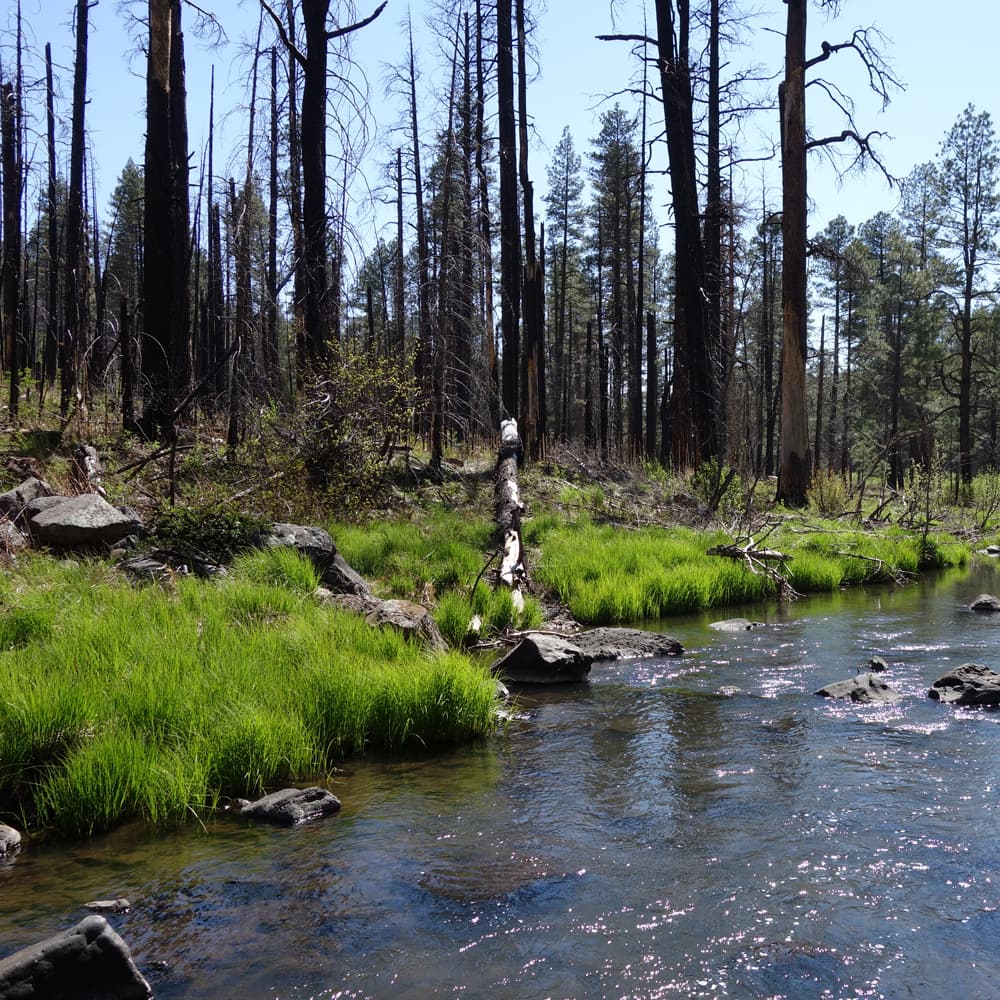AMWUA Blog
BY: AMWUA StaffWildfires Impact on our Water

As temperatures begin to soar, so do the number of wildfires in our State, which is an important reminder that we need to use extreme caution with fires. It's also essential to remember that wildfires can directly impact our water in the Valley.
Wildfires devastate forest vegetation. They leave behind large amounts of ash, heavy metals, organic materials, and sediments that then flow into the rivers and accumulate in reservoirs. The damage to the watershed significantly affects both the quality and sustainability of the water.
Outside the Valley is the 8.3 million-acre watershed that channels the snowmelt and rainfall into streams, creeks, and the Salt and Verde Rivers that then flow into Lake Roosevelt and other Salt River Project (SRP) reservoirs, which is one of the AMWUA cities ’ sources of water.
The health of this watershed is critical to life in the desert. Not only do we face challenges due to our long-standing drought, but forest fires also impact the quality and sustainability of our water supply. And Arizona’s forests are no stranger to fire.
In the last decade, more than a quarter of the forests in SRP’s watershed has been destroyed by fire. The 2015 Sunflower fire in the Verde River watershed, which took place during the monsoon season, lasted for 16 days and resulted in highly turbid water coming down the River and entering water treatment plants here in the Valley. As a result, those plants had to increase chemical use by more than 50 percent for over two months. SRP had to divert ash and debris-laden water into the rivers as it was untreatable by the water treatment plants during this time.
A healthy forest acts as a storage and filtration system. In the winter, the canopy prevents the snowpack from melting too fast. Slowing the rate at which the snow melts provides the Valley with a steady water supply when we need it the most – in spring and summer. Scorched forests expose snow to excessive sunlight, causing it to melt more quickly and increasing the likelihood of floods. Waste from runoff settles at the base of the dams, reducing reservoir capacity and affecting water quality.
With good levels of precipitation and snowpack from this past winter, you would think it would greatly help our forests and minimize the danger of fires as the temperatures begin to rise. In some ways, that is true as wet winters can hold off the immediate impact of escalating desert temperatures. Still, a wet winter also brings increased vegetation such as grass and wildflowers, which then turns into fuel once dried by our scorching sun. So, although the forests may look good after a wet winter, hot temperatures combined with continuing drought means the danger of wildfires is looming.
With the recent Ocotillo Fire in Cave Creek and as others continue to burn across our State, including the current Sawtooth Fire in the Superstition Mountains, we are reminded of how susceptible we are in our arid desert. The consequences those fires bring can have a long-lasting impact.
The AMWUA cities have long recognized the critical connection between the watershed and the Valley’s water supply. They have contributed funding for continuing efforts by SRP, the Nature Conservancy, and others to protect the watershed and reduce the risk of catastrophic fires.
While those efforts are essential to keep our forests healthy, we all need to do our part to protect our forests by practicing care outdoors, in our State Parks , and even right at home. Please enjoy Arizona’s great outdoors but use extreme caution when it comes to fire. Our diligence will protect our valuable forest areas and will ensure the sustainability of our quality water supplies.
For over 50 years, the Arizona Municipal Water Users Association has worked to protect our member cities’ ability to provide assured, safe, and sustainable water supplies to their communities. For more water information visit www.amwua.org .
Sign up for the AMWUA Blog:
Sign Up Now For Email Newsletters you can trust.
